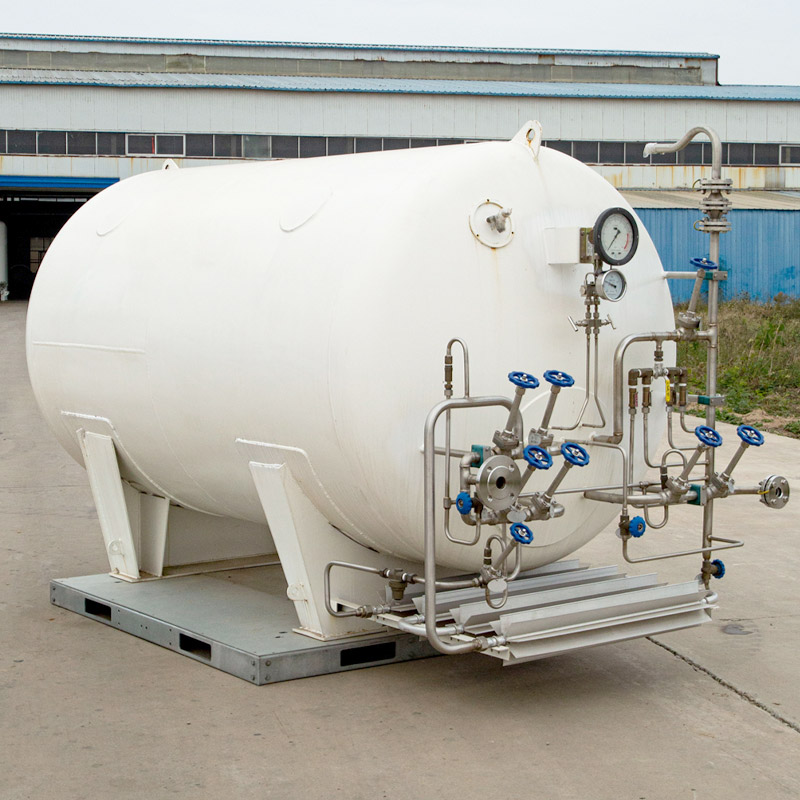Certainly! Here’s the combined translation of the two sections:
Pre-cooling procedures and precautions for LNG storage tanks:
Pre-cooling procedures:
- Activate the truck’s pressurization system. Once the pressure in the truck reaches approximately 0.3 MPa, open the liquid discharge valve on the truck and introduce the liquid into the top of the storage tank (strictly prohibited to use the bottom inlet for pre-cooling; the process should be conducted slowly). When the tank pressure rises to around 0.1 MPa, close the truck’s liquid discharge valve.
- Open the liquid discharge valve of the storage tank to carry out the tank and pipeline equipment displacement. The gas passes through the vaporizer and then to the pressure relief device, where the pressure is reduced to 0.05 MPa (the tank pressure should not be lower than 0.05 MPa, always monitor the tank pressure), and then close the relief valve.
- Once the discharged natural gas concentration meets the standards, proceed with normal pressurization of the truck. If the concentration does not meet the standards, continue with the displacement process.
- When the pressure rises to approximately 0.4 MPa, open the liquid discharge valve on the truck and introduce the liquid into the tank from the top (strictly prohibited to use the bottom inlet for pre-cooling; the process should be conducted slowly).
- If the tank pressure rises rapidly, indicating an abnormal pre-cooling process, repeat steps 2 and 4.
- Once the tank pressure stabilizes, proceed with normal unloading.
Precautions for LNG tank pre-cooling:
- During pre-cooling, keep the pressure difference between the truck and the tank below 0.3 MPa.
- Pre-cooling should be conducted at a slow pace to ensure a steady temperature decline in the tank.
- It is strictly prohibited for the tank pressure to exceed 0.5 MPa. If it occurs, close the tank’s inlet valve and open the relief valve to release the pressure directly until it reaches normal levels before proceeding with the regular steps.
- Direct contact of personnel’s skin with low-temperature pipelines is strictly forbidden.
- It is strictly prohibited to pre-cool directly from the bottom of the tank. Utilize tank displacement to replace the gas in the liquid discharge pipeline, vaporizer, pressure relief device, and other equipment.
The combined translation above provides a more lively and refined rendition while preserving the original information and technical details.
Post time: Jun-10-2023

